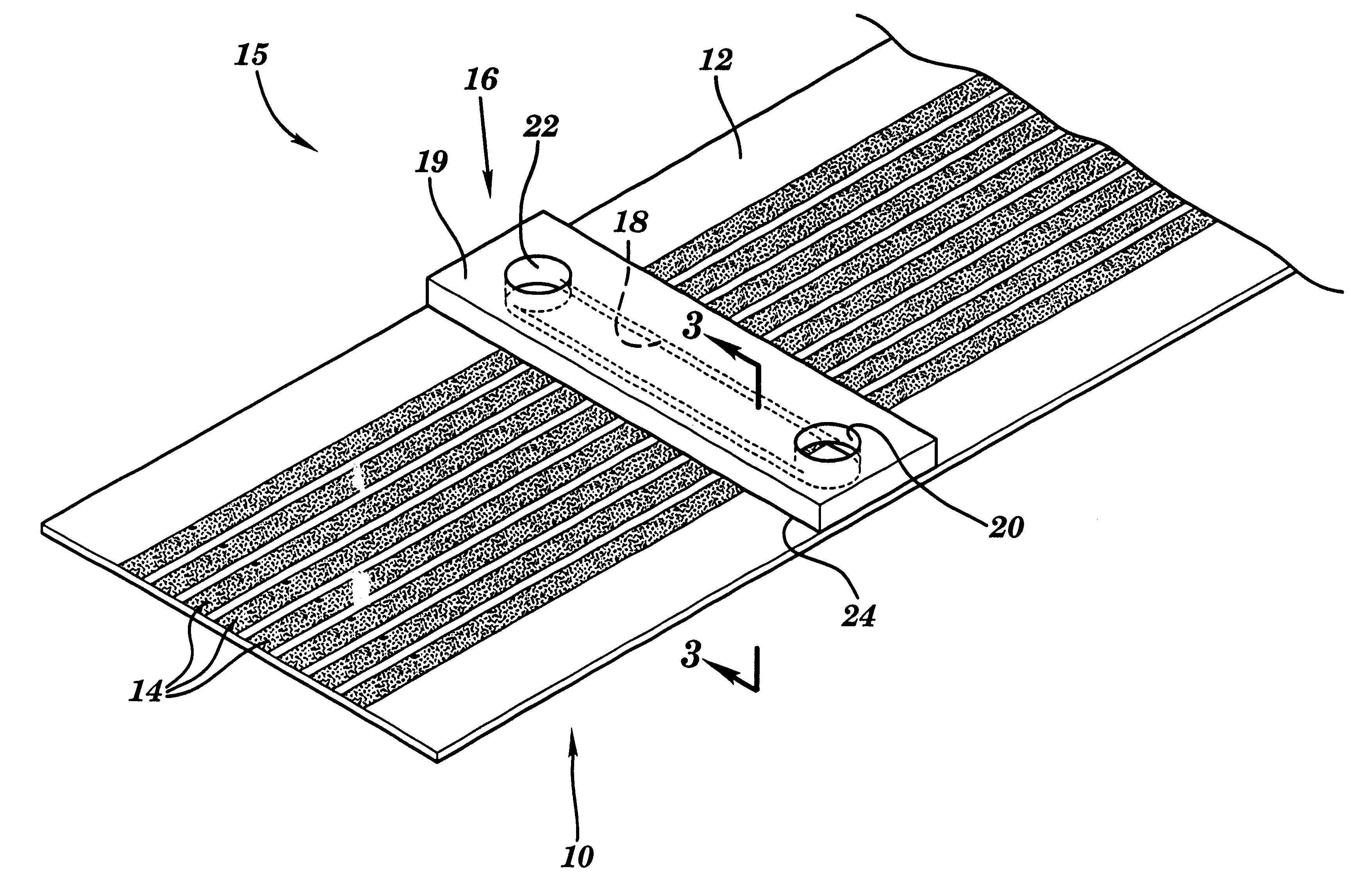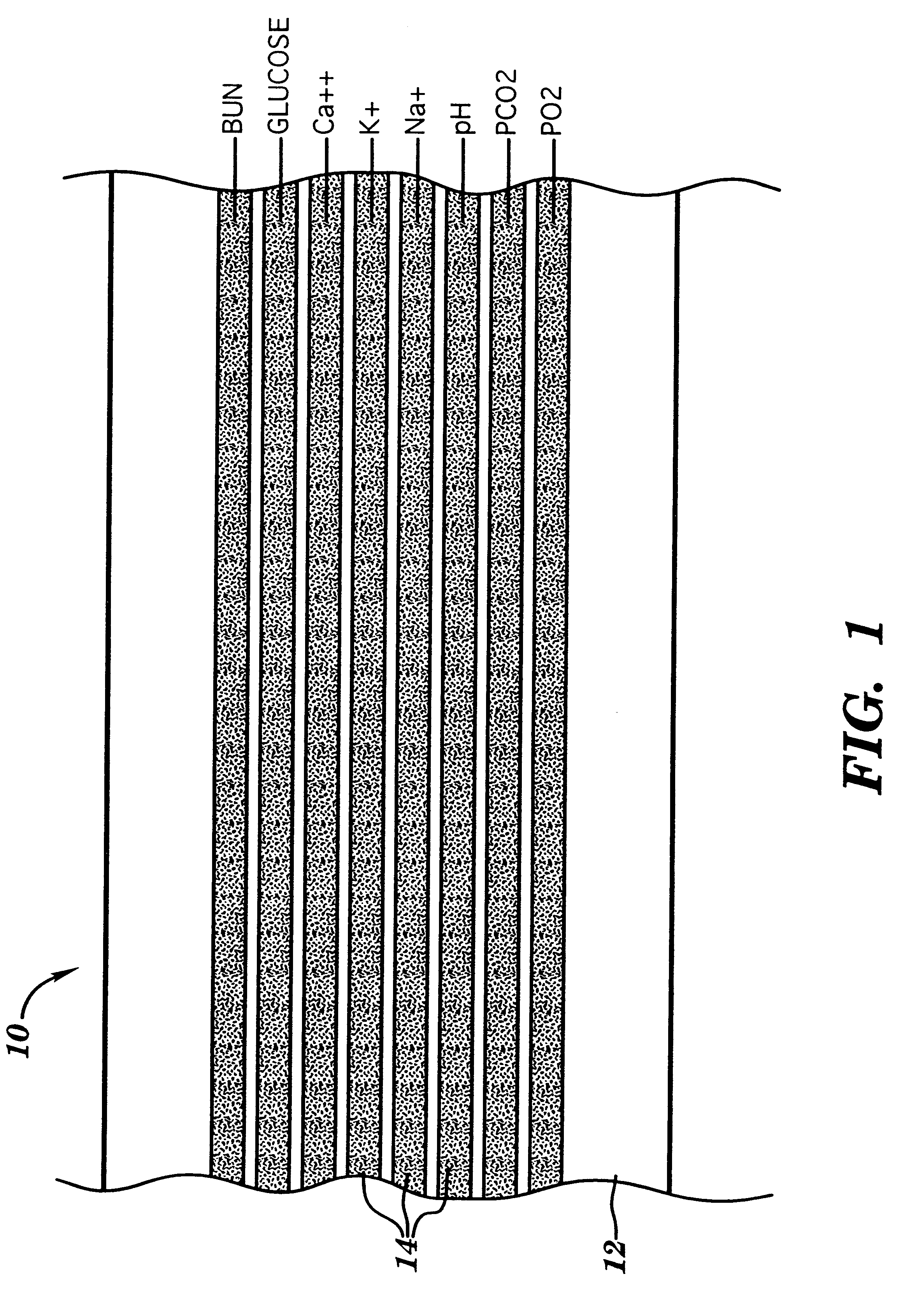Optical sensor and method of operation
a technology of optical sensors and optical sensors, applied in the direction of instruments, liquid/fluent solid measurement, analysis using chemical indicators, etc., can solve the problems of sample contamination, complicated handling and disposal of the multitude of individual used test elements, and not without limitations
- Summary
- Abstract
- Description
- Claims
- Application Information
AI Technical Summary
Problems solved by technology
Method used
Image
Examples
example 2
A sensor stripe from example 1 was placed in the measurement device described with respect to FIG. 5 but altered to contain the appropriate yellow LED source, an Omega 585DF20 excitation filter, and a Omega 750DF50 emission filter for the dye octaethyl-Pt-porphyrin ketone. A flowing gas stream with differing partial pressures of oxygen corresponding to 0%, 100%, 26%, 12%, 7%, 12%, 26%, 100% and finally 0% oxygen was passed over the sensor and the luminescence elicited from the dye recorded. The luminescence quenching trace in FIG. 7A was used to derive a Stern-Volmer quenching constant of 0.026 (mmHg).sup.-1. The exposure of the striped oxygen sensing membrane to duplicate aqueous buffer samples tonometered to partial pressures of 92, 43 and 171 mm Hg oxygen also produced rapid, and reversible responses as documented in FIG. 7B which could be used to quantitate the amount of dissolved oxygen in solution.
example 3
A sensing stripe for the analyte oxygen was constructed as follows. The dye octaethyl-Pt-porphyrin was synthesized according to methods described in J. Molecular Spectroscopy 35:3 p359-375 (1970). The styrene / acrylonitrile copolymer, with MW=165,000 and containing 25% acrylonitrile, was obtained from Scientific Polymer Products Inc., Ontario, N.Y. A mixture of 2 mg dye and 100 mg of copolymer dissolved into 1 ml of THF was deposited on a Mylar.RTM. film as in example 1.
example 4
A sensor stripe from example 3 was placed in the measurement device described hereinabove with respect to FIG. 5 and a flowing gas stream with differing partial pressures of oxygen corresponding to 0%, 26% and finally 100% oxygen were passed over the sensor. The luminescence elicited with green 540 nm excitation light from the octaethyl-Pt-porphyrin dye was continuously measured at 650 nm and the luminescence quenching trace recorded as shown in FIG. 8.
PUM
 Login to View More
Login to View More Abstract
Description
Claims
Application Information
 Login to View More
Login to View More - R&D
- Intellectual Property
- Life Sciences
- Materials
- Tech Scout
- Unparalleled Data Quality
- Higher Quality Content
- 60% Fewer Hallucinations
Browse by: Latest US Patents, China's latest patents, Technical Efficacy Thesaurus, Application Domain, Technology Topic, Popular Technical Reports.
© 2025 PatSnap. All rights reserved.Legal|Privacy policy|Modern Slavery Act Transparency Statement|Sitemap|About US| Contact US: help@patsnap.com



